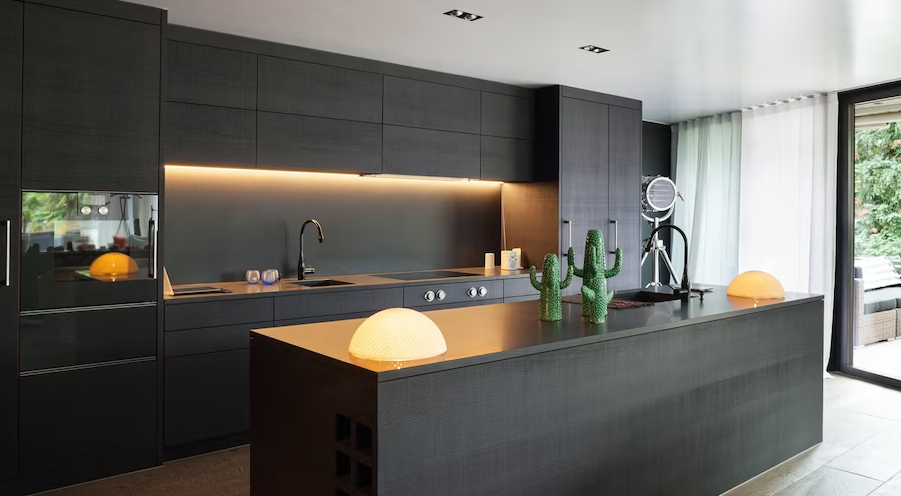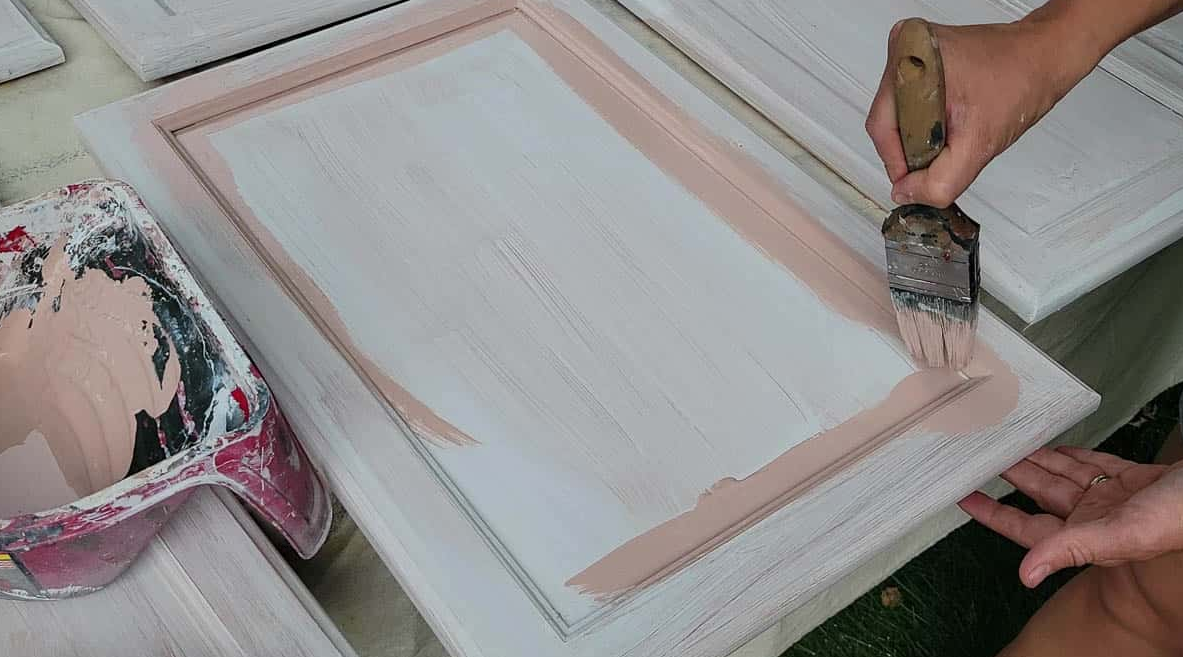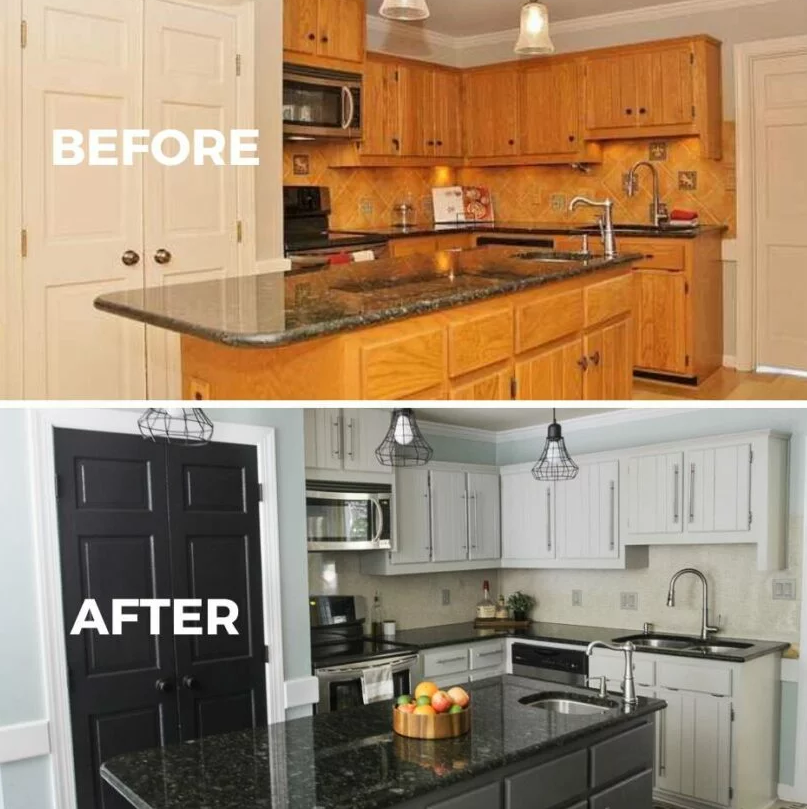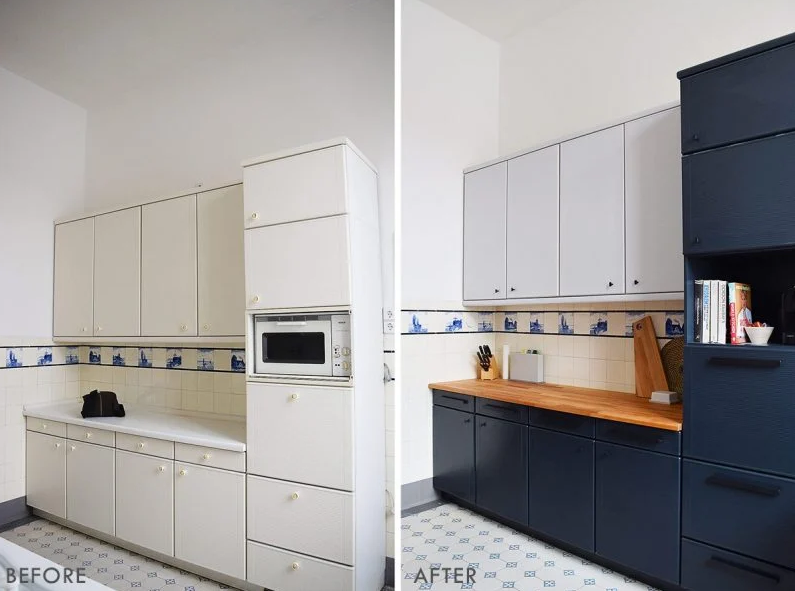
Best Way To Paint Cabinet Doors
The best way to paint cabinet doors is to start by removing them from the cabinets and laying them flat on a work surface. Next, clean the doors thoroughly with a degreaser to remove any dirt or grime. Sand the doors lightly to create a smooth surface for the paint to adhere to. Use a high-quality primer to ensure good coverage and adhesion. Once the primer is dry, apply a coat of paint in smooth, even strokes, working from top to bottom. Allow the paint to dry completely before applying a second coat if necessary. Finally, reattach the doors to the cabinets once the paint is fully cured for a professional and long-lasting finish.
- Remove cabinet doors and hardware before painting
- Sand the doors to create a smooth surface for paint to adhere to
- Apply a primer to help the paint stick and prevent chipping or peeling
- Use a high-quality paint and apply multiple thin coats for a smooth finish
- Allow the doors to dry completely before reattaching them to the cabinets
Remove cabinet doors and hardware before painting
Before painting your cabinets, it is important to remove the cabinet doors and hardware. This will allow you to paint the cabinets more easily and ensure a smooth and even finish. Start by unscrewing the hinges and removing the doors from the cabinets. Next, remove any knobs, handles, or other hardware from the doors and drawers. This will prevent them from getting in the way or getting paint on them during the painting process. Once the doors and hardware are removed, you can clean and sand the cabinets to prepare them for painting. Taking the time to properly prepare your cabinets will result in a professional-looking finish that will last for years to come.
Pros
- Allows for easier and more thorough coverage of paint on all surfaces
- Prevents paint from dripping or pooling on hardware, resulting in a cleaner finish
- Allows for easier access to all areas of the cabinet for painting
- Prevents damage to hardware from paint drips or spills
Cons
- Increased risk of damaging the cabinets: Removing cabinet doors and hardware can increase the risk of accidentally damaging the cabinets during the painting process.
- Time-consuming process: Taking off cabinet doors and hardware before painting can be a time-consuming task, adding extra time to the overall painting project.

Before painting your doors, it is important to sand them to create a smooth surface for the paint to adhere to. Sanding helps to remove any imperfections, rough spots, or old paint that may be present on the surface of the door. By sanding the doors, you are creating a clean and even canvas for the paint to adhere to, ensuring a professional and long-lasting finish. Be sure to use a fine-grit sandpaper and sand in the direction of the wood grain to avoid causing any damage to the door. Once the doors are sanded, be sure to wipe them down with a damp cloth to remove any dust or debris before applying the paint.
Pros
- Prepares the surface for a professional-looking paint job
- Helps the paint adhere better and last longer
- Smooths out any imperfections in the door’s surface
- Allows for a more even application of paint
Cons
- Sanding can be time-consuming and labor-intensive
- There is a risk of damaging the doors if not done properly

Apply a primer to help the paint stick and prevent chipping or peeling.
Before painting any surface, it is important to apply a primer to help the paint stick and prevent chipping or peeling. A primer creates a smooth and even surface for the paint to adhere to, ensuring a long-lasting finish. It also helps to seal the surface and prevent moisture from seeping in, which can cause the paint to bubble or peel over time. By taking the time to properly prime the surface before painting, you can ensure a professional-looking result that will stand the test of time. Whether you are painting walls, furniture, or any other surface, applying a primer is a crucial step in the painting process.
Pros
- Improves adhesion of paint to the surface
- Helps prevent chipping and peeling of paint
- Creates a smooth and even surface for painting
- Increases durability and longevity of the paint job
Cons
- Primer can add an extra step to the painting process, increasing the overall time and effort required.
- Using a primer may also add to the cost of the project, as primer can be an additional expense.

Use a high-quality paint and apply multiple thin coats for a smooth finish.
When painting a surface, it is important to use a high-quality paint in order to achieve a smooth and professional finish. Cheaper paints may not provide the same level of coverage or durability, leading to a less polished result. Additionally, applying multiple thin coats of paint is key to achieving a smooth finish. Thick coats of paint can lead to drips, uneven coverage, and a rough texture. By applying several thin coats, allowing each one to dry completely before adding the next, you can build up a smooth and even finish that will last for years to come. Taking the time to use the right paint and apply it properly will result in a beautiful and long-lasting paint job.
Pros
- High-quality paint provides better coverage and durability
- Multiple thin coats prevent drips and streaks
- A smooth finish enhances the overall appearance of the painted surface
- Using high-quality paint can result in a longer-lasting finish
Cons
- High-quality paint can be more expensive than lower-quality options, increasing the overall cost of the project.
- Applying multiple thin coats can be time-consuming and require more effort compared to a single thick coat.

Use a high-quality paint and apply multiple thin coats for a smooth finish.
When painting a surface, it is important to use a high-quality paint to achieve a smooth and professional finish. Cheaper paints may not provide the same level of coverage or durability, leading to a less polished result. Additionally, applying multiple thin coats of paint is key to achieving a smooth finish. Thick coats can lead to drips, streaks, and an uneven appearance. By taking the time to apply several thin coats, allowing each one to dry completely before adding the next, you can ensure a flawless finish that will last for years to come. Remember, quality paint and patience are key to achieving a smooth and professional-looking paint job.
Pros
- High-quality paint provides better coverage and durability
- Multiple thin coats prevent drips and streaks
- A smooth finish enhances the overall appearance of the painted surface
- Using high-quality paint can result in a longer-lasting finish
Cons
- High-quality paint can be more expensive than lower-quality options, increasing the overall cost of the project.
- Applying multiple thin coats can be time-consuming and require more effort compared to a single thick coat.

FAQs
What are the necessary steps to properly prepare and paint cabinet doors for a smooth and durable finish?
- Remove cabinet doors from hinges and hardware
- Clean cabinet doors with a degreaser and sand lightly to remove any existing finish
- Fill any holes or imperfections with wood filler and sand smooth
- Apply a primer to the cabinet doors to ensure proper adhesion of the paint
- Allow primer to dry completely before applying paint
- Apply paint in thin, even coats using a high-quality brush or roller
- Allow paint to dry completely between coats
- Sand lightly between coats for a smooth finish
- Apply a clear topcoat for added durability and protection
- Reattach cabinet doors to hinges and hardware once paint is fully cured
Why is it important to remove cabinet doors and hardware before painting?
It is important to remove cabinet doors and hardware before painting because:
- It allows for easier and more thorough coverage of the cabinet surfaces.
- It prevents paint from getting on the hardware, which can affect its functionality.
- It ensures a cleaner and more professional-looking finish.
Why is it important to use a high-quality paint and apply multiple thin coats for achieving a smooth finish on a surface?
Using a high-quality paint is important because it will provide better coverage, durability, and a more professional finish. Applying multiple thin coats allows for better control over the paint application, resulting in a smoother and more even finish.
How important is it to sand the doors before painting in order to ensure a smooth surface for the paint to adhere to?
It is very important to sand the doors before painting in order to ensure a smooth surface for the paint to adhere to.
Why is it important to apply a primer before painting to help the paint stick and prevent chipping or peeling?
It is important to apply a primer before painting because it helps the paint stick to the surface and prevents chipping or peeling.
Why is it important to use a high-quality paint and apply multiple thin coats for achieving a smooth finish on a surface?
Using a high-quality paint is important because it will provide better coverage, durability, and a more professional finish. Applying multiple thin coats allows for better control over the paint application, resulting in a smoother and more even finish.






